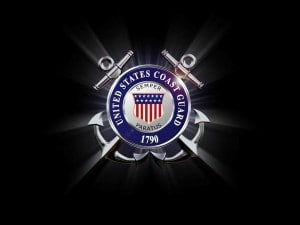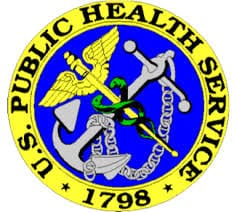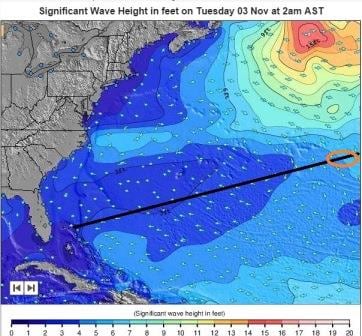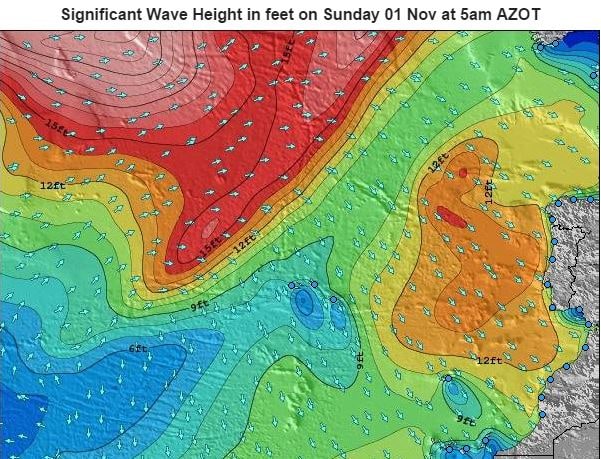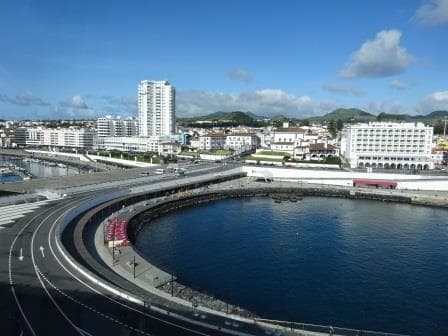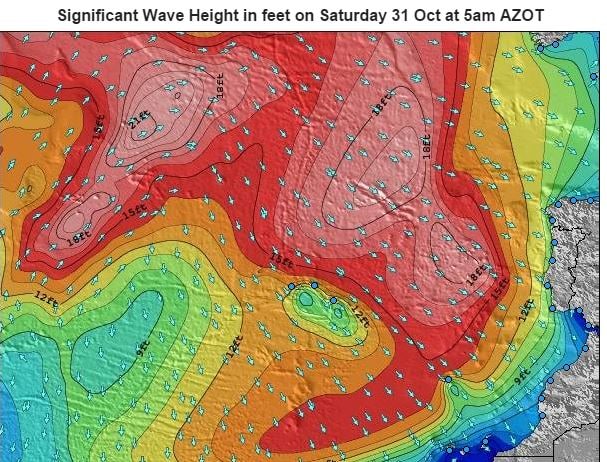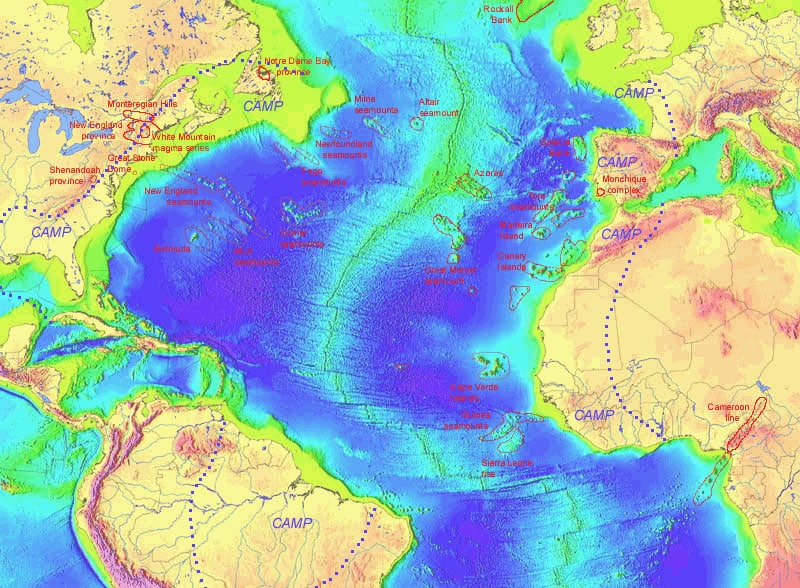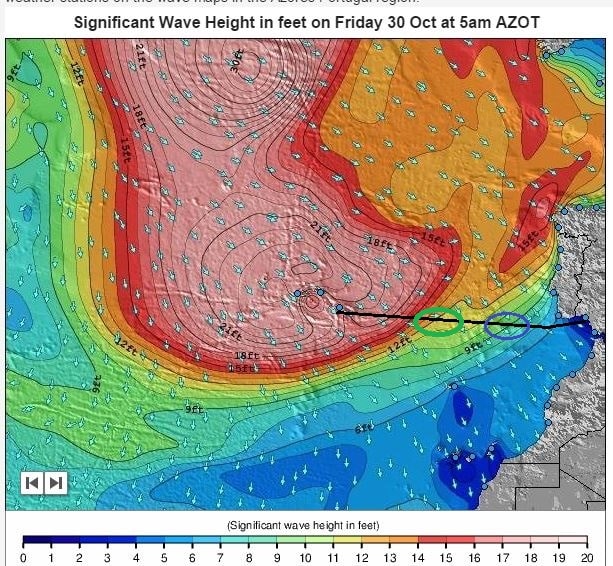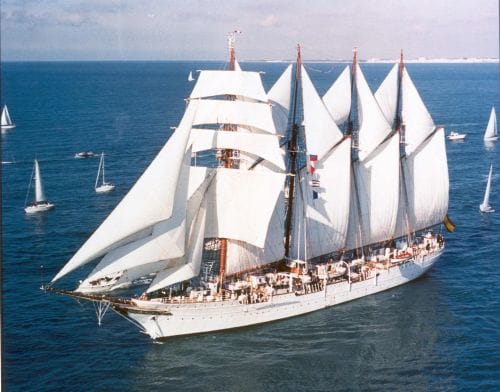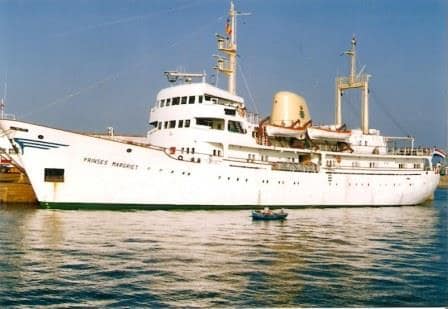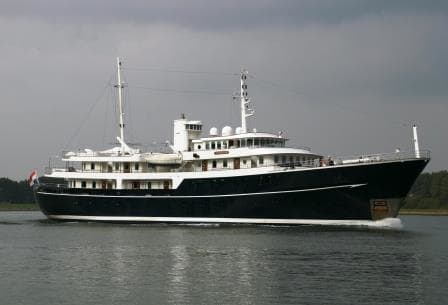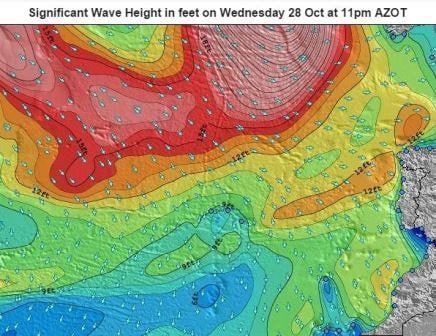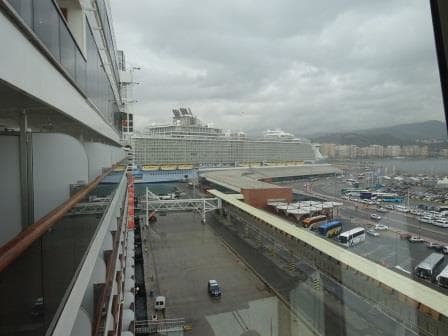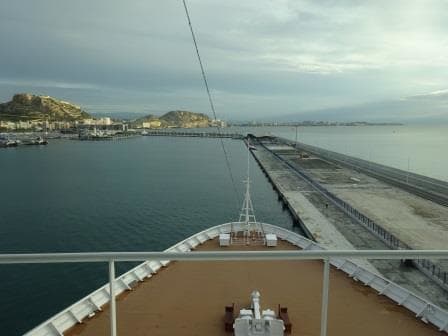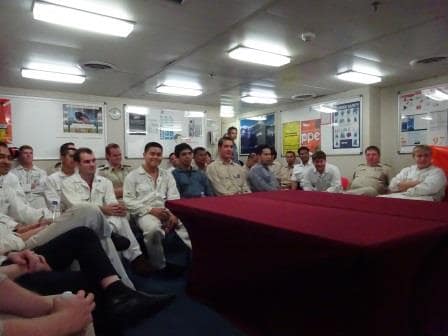The sun came through this morning but it also brought some headwind. So much that we had a gale blowing today. But it was a new gale, a wind just developing under the influence of a low pressure system somewhere to the south west. And new winds have not had the time yet to create swell and thus we had a nice ride today. We are now about 1100 miles from Horta and that is almost halfway to Nassau. We are sailing a Great Circle route which is the shortest distance on a curved surface.
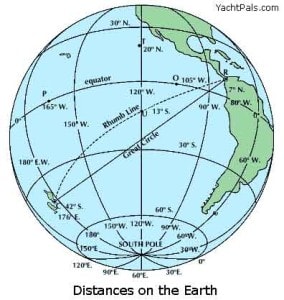 The world is a globe and that means that if you could folded the surface flat and draw a shortest distance between two points and then put it back the way it was it would turn into a curved line. That is what we call a Great Circle Line or course. The opposite goes for the Rhumb Line which is a straight line but when it follows its track along the curvature of the earth, it is longer. I am not going into further detail as a quick google will give much better explanation than I can give.
The world is a globe and that means that if you could folded the surface flat and draw a shortest distance between two points and then put it back the way it was it would turn into a curved line. That is what we call a Great Circle Line or course. The opposite goes for the Rhumb Line which is a straight line but when it follows its track along the curvature of the earth, it is longer. I am not going into further detail as a quick google will give much better explanation than I can give.
The two important things to remember are the curved line goes higher up then the Rhumb line and could thus potentially come closer to bad weather.
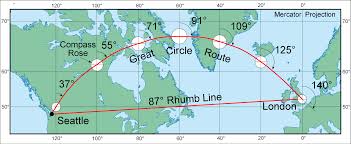 If the weather all around is the same then it is interesting to use the Great Circle as it is shorter and thus saves fuel. It can make a difference of up to 150 miles on a complete ocean crossing and that gives a significant saving in fuel consumption. We are using about 0.3 tons of fuel to cover a mile, times 150 miles, times 600 dollars a ton = $ 27,000 in the pocket. We are not the only ones who do this. Airplanes do the same. Every time you travel Intercontinental you hear the pilot explaining that they are going over the North Pole or close to it and that means they are following a Great Circle route.
If the weather all around is the same then it is interesting to use the Great Circle as it is shorter and thus saves fuel. It can make a difference of up to 150 miles on a complete ocean crossing and that gives a significant saving in fuel consumption. We are using about 0.3 tons of fuel to cover a mile, times 150 miles, times 600 dollars a ton = $ 27,000 in the pocket. We are not the only ones who do this. Airplanes do the same. Every time you travel Intercontinental you hear the pilot explaining that they are going over the North Pole or close to it and that means they are following a Great Circle route.
My own navigation landed me today in the Pinnacle Grill. Not for dinner but for training. The ship’s officers do a lot of “First Response” training with the crew, so the crew knows what basic steps to take in case of a fire; until the Fire teams arrive. Very often these basic steps ensure that a fire gets extinguished on the spot or remains very small and under control. When I am on board I like to help out here as A: it is always nice for the crew to see a new face and B: I have more time to spend on this than the average deck officer and that gives the possibility to give a more extensive training’s. Plus it makes the crew feel important that they are being trained by a captain. Word goes around on A, B and C deck, and sometimes I am admonished by certain groups why I have spent time with “the others” and not with them.
This training brought me in the kitchen while Room Service Breakfast was still going on, e.g. being delivered. We have a special group of stewards mainly assigned to this job as their work hours are out of kilter with the rest of their colleagues. Breakfast starts before the Lido or the Dining room opens and regular room service is there for 24 hours a day.
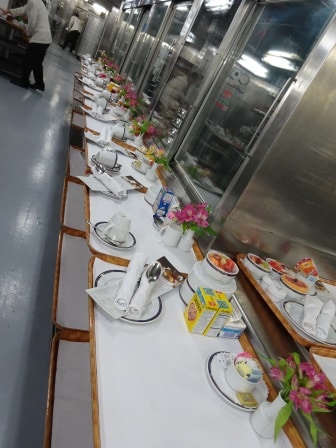
Breakfast assembly line. the 09.00 time slot. A lot of guests must have been sleeping in. Please notice that Holland America touch of a little flower on the tray.
The whole happening is quite a puzzle which is carried out as a sort of assembly line. It starts with collecting all the breakfast cards hanging outside the cabin doors. So after midnight stewards roam through the ship collecting all these cards. And that roaming does not stop when the deadline of putting them out has passed. There will be a final pick up, to ensure that those who forgot, those who are still on another time zone, or those who changed their minds (or added a 2nd order) will not be left out.
Then during the early hours the first run of tray’s are lined up and everything not cold, nor chilled, hot or perishable is put on the tray. When the first run goes out the next line of trays appear, etc. etc. etc. until all breakfast time slots have been completed. Once done, the rounds start to collect the trays again. Some have been removed already by the Cabin Stewards but some still have to be collected by the Breakfast team.Tomorrow will be another day at sea. We have already outrun the wind of this morning and tomorrow should be another nice and quiet day.
